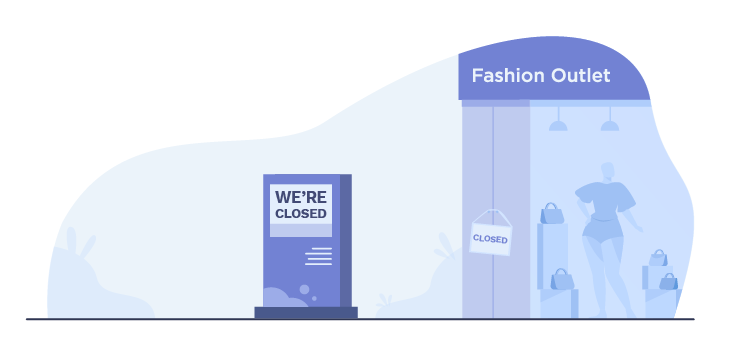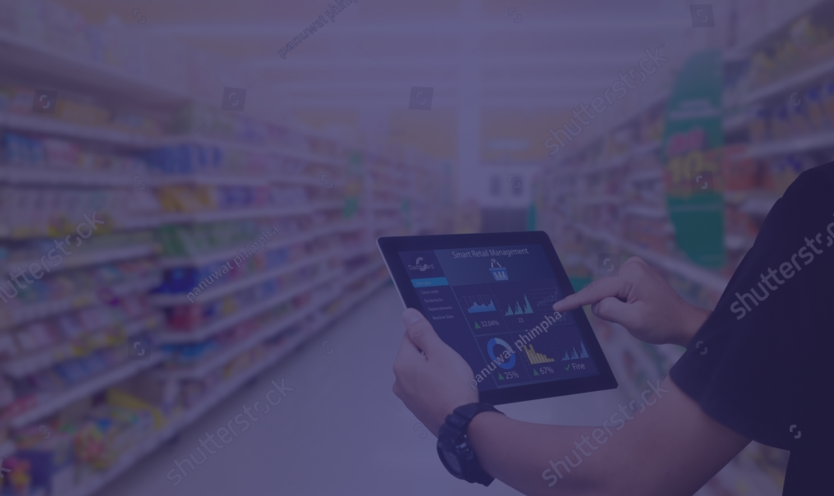Mapping the Return to Inventory Accuracy
Mapping the Return to Inventory Accuracy
Retail inventory accuracy – the degree to which stores suffer from out-of-stocks and excess stocks – had been an area of global business improvement until the COVID-19 crisis arrived.
Both measures had been declining nicely right up to the beginning of 2020, an improvement of US $158 billion worldwide over a three-year span, according to consultancy IHL Services, which tracks retail tech issues.
Organized retailers had been steadily implementing store level and supply chain capabilities like perpetual inventory, computerized ordering systems, and other technology to add greater visibility and accuracy to their distribution practices. The investment was paying off.
“Then COVID-19 happened, which caused a massive explosion of the supply chain,” said Greg Buzek, CEO of IHL. Even the new systems were overwhelmed, as panic shopping depleted shelves and emptied warehouses of grocery products, while restaurants closed and un-sold seasonal goods gathered dust in shuttered apparel and specialty stores.

The latest report documents an astonishing uptick in inventory distortion since the pandemic emerged in February. Globally it adds up to $1.8 trillion U.S. That’s a combination of sales lost due to out of stocks ($1.14 trillion) and markdown costs due to excess inventory ($626 billion) according to IHL’s latest report, “Disrupted Retail: How the Pandemic Exposed Retail’s Hidden Inventory Distortion.” Taken together, the losses amount to 10.3% of sales in retail and hospitality.
In the North American geography, the totals are no less sobering. Out-of-stocks totaled $223.1 billion, according to IHL, while overstocks cost retailers $135.1 billion, a total of $358.2 billion in inventory distortion so far this year.
In a few categories, said Buzek, “The sudden massive demand for many products, up to a 600% increase, depleted a 4-month inventory within a 2-week period of time.”

China’s prior shut down of manufacturing added greater delays up the supply chain on some categories of goods. The result, he said, was, “a perfect storm that blew an improving inventory situation out of the water.”
While painful to confront, these hard facts also present transformative opportunities for retailers, restaurants, hospitality, ecommerce, and product marketers. Those who move swiftly to incorporate superior decision-making solutions can differentiate by adopting more responsive and accurate business practices.
A new light on Inventory Accuracy
IHL has tracked inventory distortion closely since 2011, in a series of study reports. It defines Inventory distortion to mean what occurs when a retailer has too many of an item (overstocks) or too few of an item (out-of-stocks).
Overstocks generally compel retailers to heavily discount prices in order to sell the goods and sustain cash flow, or they may result in loss due to product spoilage or expiration. While a certain percentage of markdowns are standard practice in seasonal categories like fashion apparel, amounts above the norm are considered to be in excess, resulting in monetary loss.

Out-of-stocks create risks of losing the sale and damaging shopper loyalty, resulting in direct and indirect consequences on sales and profitability.
The COVID-19 economy has shed new light on the many decision-points that retailers must continually manage to maintain inventory accuracy when outside events distort forecasts and disrupt promotion plans. The lessons are universal, even though COVID’s impact has been unevenly distributed across retail channels, product categories and geographies. Consider some of the tough consequences we have witnessed in the past 6 months:
- Severe shortages in grocery and consumable products caused by consumer panic shopping and exacerbated by poor reordering practices and slow response by manufacturers.
- Overstocks in home goods and fashion apparel caused when stores and shopping malls were forced to close their doors
- A surge in digital ordering at omnichannel and pure ecommerce retailers, including large supermarket chains, Walmart and Amazon.com, with many shoppers trying these purchasing options for the first time.
- Gasoline sales at convenience stores fell off a cliff as consumers self-isolated and workers stopped commuting to work. This drove inside sales at c-store down overall at first, but as shoppers confronted shortages of some items in their regular stores, some looked to C-stores as an alternative, IRI reports.
- Large, organized retailers worldwide had more resiliency versus independent shops, but thousands of independently owned stores, bars and restaurants are closing their doors, according to Facebook Data for Good.
For each sector, these events expose new and specific challenges for managing inventory accuracy in retail.
Will shopper behavior changes endure?
In the grocery sector, for example, “Click & Collect and local delivery surged 350-400% during the pandemic for retailers like Walmart, Target and Kroger,” Buzek said, citing published reports. “In the process, it exposed issues that were previously hidden when you were walking through the stores.”
During an in-store shopping encounter, he explained, when a desired item is unavailable, a consumer may find five to ten other variety choices, as many as 20 alternate items to choose from. Retailers have no visibility of that decision process whatsoever.

In contrast, in an online shopping encounter, the item requested is exactly known because every click and pageview is digitally logged. If a desired item is OOS, the digital retailer must immediately communicate back to the shopper about alternatives or fail to provide it.
While it is helpful that such incidents will be visible to the retailer, there are also consequences, in terms of added labor and delivery costs, and a potential harm to shopper satisfaction. Alternate items may have different prices and margins, which may have an unpredictable impact on business forecasts and subsequent merchandise planning.
After panic stock-up shopping created initial shortages in March and April, we witnessed involuntary and willful changes in shopper behavior due to lockdown and social distancing. These have distorted the usual signals that retailers regularly monitor to understand demand and keep merchandising in balance. Among the reported behavioral changes:
- Fewer, less-frequent grocery trips, with larger baskets that are also altered in character and margin profile
- Morning coffee purchases drop hard, as many commuters switch to work-at-home
- Postponement of non-essential item purchases like apparel and cosmetics
- Consumer interest in new or emergent product categories, like PPE, cloth masks, and hand sanitizer
- Booming sales of bicycles and swimming pools, as self-isolated households seek alternative recreational options
- A steep drop-off at dine-in restaurants, coupled with a strong rise in take-out and delivery ordering
While the story has yet to be written on which of these behavioral changes will be enduring and to what degree, retailers are exerting themselves to respond in the near term and prepare for the future. The consequences will be financial and operational, and the decisions ahead will require better data and better, faster, more accurate support tools that incorporate AI and Business Intelligence 3.0. The challenges are many:
- The switch to digital has exposed OOS and fulfillment insufficiencies in existing systems across most retail sectors, up and down the supply chain
- BOPIS programs were put under duress, their flaws exposed, as shoppers endured missing items, substitutions, and inconvenient pickup times
- Retailers have been repeatedly forced to tell shoppers they can’t buy what they can’t get – toilet paper has become the emblem for this
- Shortages in some tech products like webcams, mics and cam-equipped laptops due to work-at-home demands were exacerbated further by factory shutdowns in China and other source markets
- An entire fashion season has been lost; massive amount of inventory sits idle; retailers are faced with a painful dilemma about how to dispose of these goods
Implications for managers
Some changes in shopping patterns may be long-lasting, but it would be shortsighted to assume they will remain consistent over time. As Buzek observed, COVID-19 cases are still on the rise in the U.S., which means full or partial shelter-in-place is far from over.
Recent experience has proved how it can be very challenging for retailers to sort out even near-term plans while in the midst of a response. It is imperative for retailers to track the present situations in their stores and web sites closely, interpret wisely, and revise outlooks continuously. Rapid, responsive analytics and decisions will be essential to this effort.

As Buzek said. four months of supply chain can evaporate in two weeks, as occurred in the grocery sector, how should retailers prepare for another crush?
He offers a strategic approach: “Have a solution that allows outside data to be referenced, such as a demand surge rolling through other geographies. In some situations, it can be a race to order first from the wholesalers.”
With the pace and risk of decision making on the increase, BI 3.0 can help retailers across all sectors answer critical business questions like these:
- Grocery: What is the impact on our business of item substitutions due to OOS when we fulfill online grocery orders, in terms of margin impact, labor costs, and lost sales? How are these metrics trending?
- eCommerce: What do online shopping visits reveal about our present unsatisfied demand for scarce consumer electronics items like webcams, headsets, and laptops? How is this impacting shopper loyalty and revenue? What requests should we be making from our suppliers?
- Apparel Specialty: What is our best scenario for clearing excess fashion inventory that has been stagnant during the pandemic closures? Deep markdowns? Sell to off-price retailers? Mothball for next year? Send to the landfill?
- Restaurants: Can our table service restaurants remain viable by relying solely on take-out and delivery sales? For how long? Should we suspend sale of less profitable menu items? Should we adjust our prices, or break out separate delivery and service charges?
- C-Stores: What short term adjustments can we make to attract more shopping trips and gain share from competing channels for sales of high-demand consumable items? How can we forecast the impact of these changes on our margins and profits?
“At IHL we firmly believe the battle ground for the next decade is going to be the ability to apply AI and machine learning on store operational issues and store inventory issues,” said Buzek.
This describes, in a nutshell, our reason for being at Hypersonix. To prevail in the face of disruptive change – whether created by the present pandemic or challenges yet to be encountered – retail managers will need decision support that is autonomous, predictive and prescriptive.
About Hypersonix
Hypersonix (www.hypersonix.ai) offers the most comprehensive cloud-based, AI-powered autonomous analytics platform that enables consumer commerce decision-makers to make smart decisions fast – empowering them to get real-time intelligence, insights and recommendations to take timely actions leading to business success.
Want to know how Hypersonix can help you? See a live demo today.

![[Podcast] Prem Kiran in conversation with Mission Matters](https://hypersonix.ai/hubfs/PRWeb%20(49).png)

.png)


